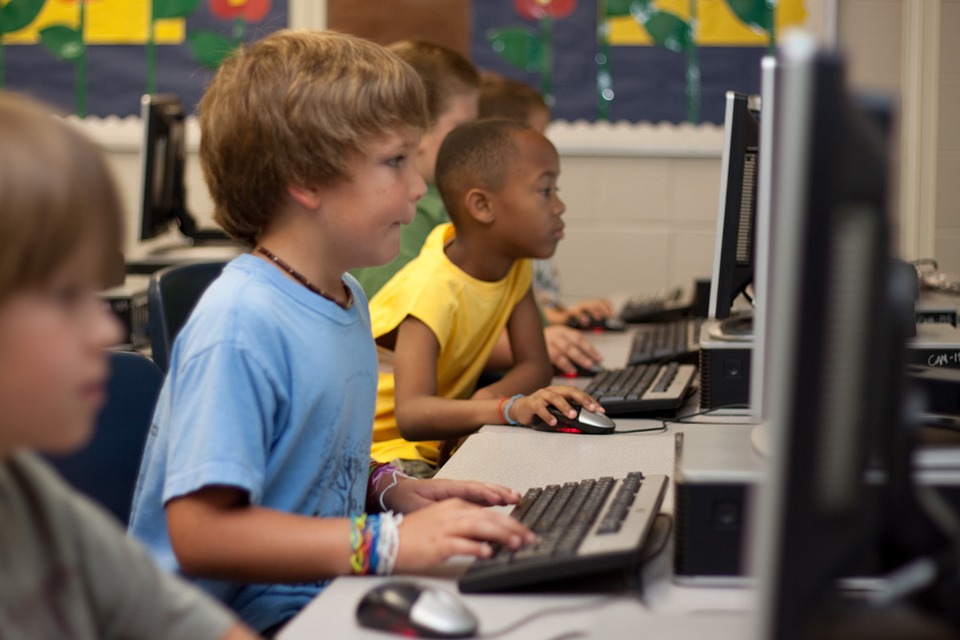Teach Me: Automation’s Role in Education

Editor's note: This article was published in 2016. For a current look at the role of automation in education, check out UiPath Academic Alliance or read How Schools are Enabling a Robot for Every Student.
Without even recognizing it, many of us already interact with automation on a daily basis to simplify everyday tasks. We receive automated order confirmations after placing online orders, use “smart” devices to regulate our thermostat and lock our doors when away from home, or maybe use a parking assist feature on our car. These kinds of automations are infiltrating workplaces and homes at a rapid pace, and the average consumer is quickly experiencing a semi-automated lifestyle in all aspects of their day-to-day lives. Despite all of this, the impact that automation has on education systems is hardly considered — however, automation’s role in education is most definitely a topic for discussion.

In a 2016 study on the automation of library systems in schools, Indian researchers Ipsita Panda, Jhasketa Hota, and Karan Singh, suggest that the education field is already experiencing, and will continue to feel, the impacts of emerging automation platforms. The authors argue that, in the current world economy, many “education institutions have [already] automated most of their teaching learning process….[Automation can and should] be used in education to improve administration efficiency and to enhance teaching and learning.”
While automation technologies are becoming a significant and meaningful part of our daily lives and the impact of automation is even reaching into education systems, much of the future role of automation in education is still unknown, especially at its starting point: primary and secondary education.
This level of uncertainty raises some important questions: What changes will automation bring to these education spheres, and how will the next generation of school-aged children adapt to the rise and spread of this technology? To answer these questions, we’ll examine some potential concerns as well as benefits that accompany the implementation of automation technologies, like RPA, within the realm of education.
Educational impacts
The educational sphere is a broad one, encompassing teachers, students, and academic administrators. As technologies become more widely adopted, they become incorporated into both primary and secondary education systems. This was the case with electronic calculators, desktop computers, laptops, tablets, slide projectors, “smart” boards, and much more. The same can be expected of automation and robots, and the beginnings of this adoption are starting to be visible in schools as they implement automated attendance and grading systems and use robots to supplement teaching.
With these examples in mind, let’s consider the ways in which automation technologies, such as robotics, RPA, and AI, can deliver challenges as well as benefits to teachers, students, and academic administrators.
For academic administration: Academic administrators are responsible for many of the back office tasks that must be executed in order to keep schools running, including creating class schedules, keeping student attendance, processing grades and report cards, as well as helping to admit new students. Inherently, many of these activities are heavily paper-based, repetitive, and time-consuming, making them an ideal fit for RPA. The automation journey will not be without challenges for administrators: the implementation of RPA must be agreed upon by the school board and, in many cases, it is still a large financial and time investment. This doesn’t mean, however, that academic administrators will not be able to reap the benefits of automation once implemented. By deploying automation software within a school’s academic administration, much of the current manual labor and paperwork can be entirely eliminated, meaning that academic staff will be empowered to fill roles that allow them to be more creative and inventive. As a result, they will be able to focus on what matters in education: developing closer, more meaningful relationships with teachers, students, and parents.
For teachers: Many discussions regarding automation are also accompanied by discussions regarding job loss. This is also a risk that teachers face, as robots have already been seen emulating teachers in schools. Saya, for example, is a robot teacher that led a 2009 science and technology class in Tokyo, Japan. Despite the advances in these technologies, McKinsey suggests the replacement of teachers by automation is highly unlikely. In fact, most education jobs are low on the spectrum of replacement by automation, with only 20% of education positions being fully automatable. Rather, teachers will be able to use automation, specifically RPA, to their benefit.
Potential tasks for automation include ones that are burdensome for many teachers: scheduling, keeping track of attendance, and even assignment grading. While automating these tasks will shift the responsibilities of teachers in the long run, it will allow them to spend less time on routine tasks and more time with their students. Read how two professors are using automation to help close the education gap.
For students: While perhaps more of an indirect result of automation, students are most benefitted by automation because these technologies allow students to have more meaningful interactions with their academic staff members. As discussed above, automation delivers increased time-liberation and productivity that automation to teachers and academic administrators. Students can receive feedback on their homework assignments, projects, exams more quickly, accurately, fairly than ever before; this means that students must no longer face grading mistakes or wait sometimes weeks and months to get feedback on their work. Even more so, because it eliminates much of the tedious paperwork and tasks for which academic staff are responsible, automation allows for more direct and sustained contact between students and educators. This human interaction allows for much deeper experiential learning, and it is arguably one of the the most valuable aspects of automation for students in gaining new knowledge, insights, and skills.
The future of automation in education
The development of automation, even within the realm of education, is an inevitable reality. Much is still unknown about the impact automation will bring to primary and secondary education in the future, but there are also a number of significant benefits of automation that can already be seen within the field of education. The biggest value-adding boost that automation will bring to the table is the additional interaction time that it allows between students and those who educate them.
However, what’s more is that automation, artificial intelligence, and robotics are positioned to make an even bigger splash in education in the future. It will allow schools to adapt to student needs and provide more individualized teaching, allowing students of different skill levels to work together in the same classroom. By monitoring levels and patterns of student knowledge, automation will be able to help teachers identify and address gaps in their teaching. In addition to grading fill-in-the-blank and multiple choice assessments (something which is already possible now with automation), these technologies will be able to help teachers evaluate short answer questions and essays. Students will also be able to get additional after-school support from “machine” tutors.
The list could go on and on. While not all of these impacts have yet been realized and there will, of course, be obstacles along the way, automation is positioning administrators, teachers, and students to make the best of the education system — now and in the future.

Content Developer, Trekk
Get articles from automation experts in your inbox
SubscribeGet articles from automation experts in your inbox
Sign up today and we'll email you the newest articles every week.
Thank you for subscribing!
Thank you for subscribing! Each week, we'll send the best automation blog posts straight to your inbox.



